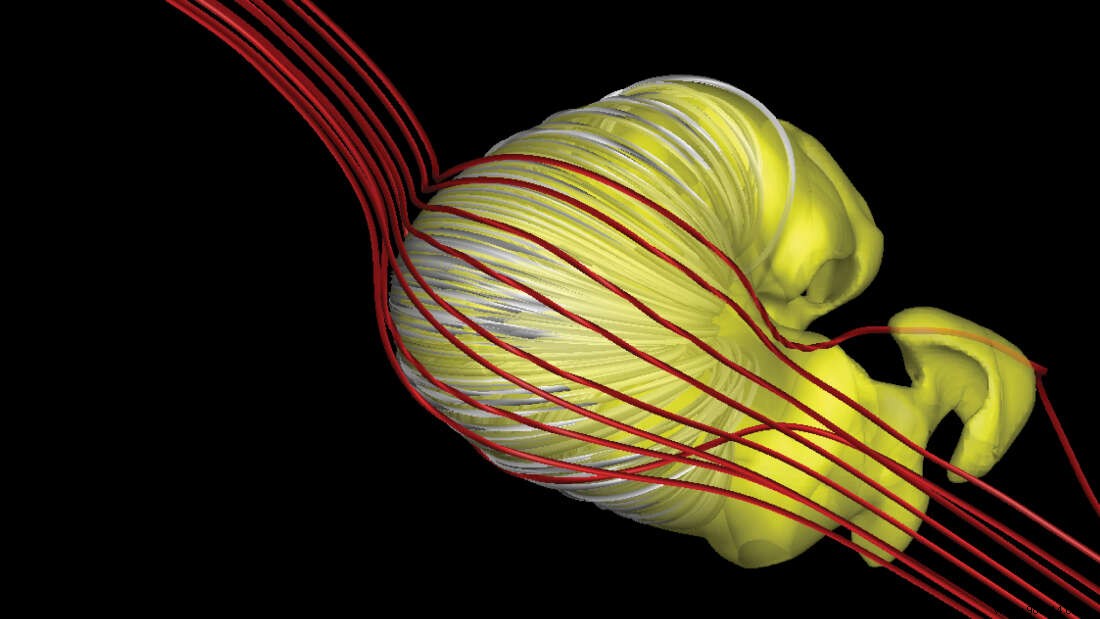A new model suggests that the shape of the heliosphere, the Sun's bubble of influence, has the shape of a deflated crescent, rather than that of a comet at long tail suggested by other research.
The heliosphere is the area of influence of the Sun. Generated by solar wind particles, it extends twice as far as Pluto's orbit, before weakening and then giving way to the interstellar medium. Finally, it is what keeps all the objects in our system safe from cosmic rays from this outer space, among other dangers. But what are the limits of this protective bubble?
These works have always been complicated insofar as we are housed inside our system. To better understand these measures, the best way would therefore be to be able to take a look from the outside. It was then that the Voyager 1 probes and Voyager 2 enter the scene.
Researchers have used computer models to predict the characteristics of this protective envelope . To do this, they used data from these ships launched in the 70s, which have since reached interstellar space. Data provided by Cassini missions and New Horizons have also been taken into account.
“We focused on particles usually underestimated in the energy balance of solar winds “, explains Merav Opher, of Boston University.
The latter come to us from outside the heliosphere in the form of electrically neutral hydrogen atoms. This is why they have no trouble penetrating our defenses. On the other hand, once inside, these atoms suddenly find themselves electrically charged under the influence of the solar wind.
Since these particles are "modified" by interacting with the solar wind, they act as a proxy to map the edge of the heliosphere. That's why NASA relied on them, using them as a kind of radar to draw the boundary separating our system from interstellar space.
Until now, we thought the heliosphere was comet-shaped. Mean by this a rounded leading edge extended by a long trailing tail. This new study, published in Nature Astronomy , invites us today to review this form. In the words of NASA, it would look more like a "deflated crescent" .

As we can see above, particles generated by the Sun are in yellow. Those coming from the interstellar medium, illustrated in red, come up against them before going around them.
Understanding this form of the heliosphere is far from trivial. This protective bubble is not completely waterproof. In reality, up to 25% of cosmic rays from the entire Galaxy manage to pass and arrive on Earth . "It's them which would be responsible for random mutations in the DNA of living beings, which are one of the drivers of the evolution of species “, emphasizes the researcher.